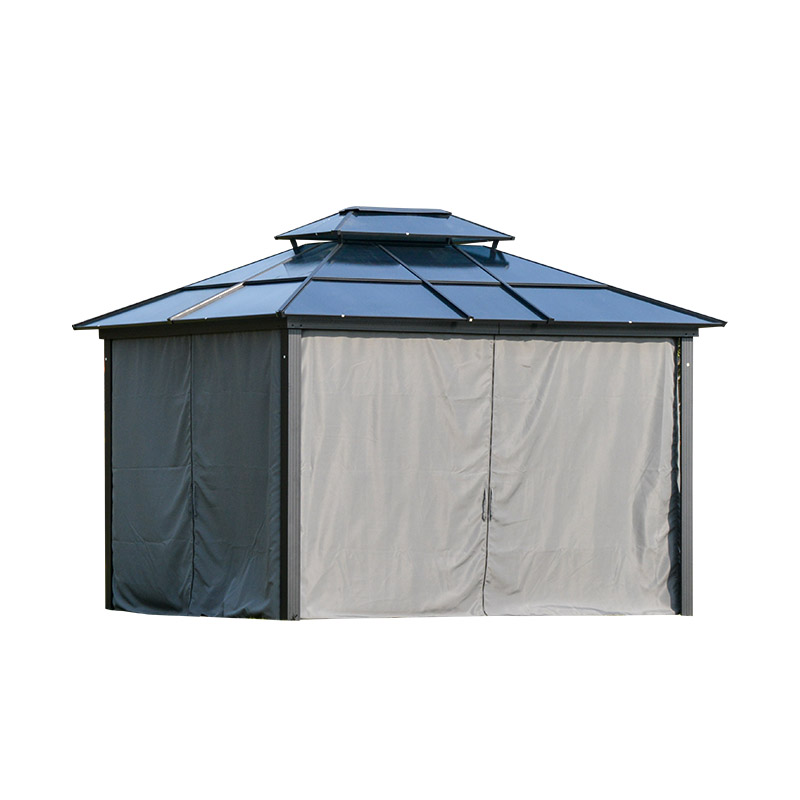2025-10-24
An Aluminum Pergola With Adjustable Roof is gaining prestige in the outdoor living sector as homeowners and designers seek structures that combine control over sunlight, durability, and aesthetic flexibility. In 2025, this category stands out due to innovations in automation, material technology, and integrated systems that raise expectations for what a pergola can deliver.
Aluminum Pergola With Adjustable Roof Market Trends
Outdoor living investment continues strong in 2025. Many homeowners opt to upgrade patios and yards to year-round usable spaces. Aluminum pergolas are drawing notable preference over traditional timber models because they resist rot, insects, and warping. Adjustable roof systems are one of the fastest growing subcategories, evident in demand for motorized louvered roofs and retractable panels. Supply chains report that orders of pergolas that include adjustable roof modules now account for over 40 percent of aluminum pergola sales in many regions.
Aluminum Pergola With Adjustable Roof Design Features
What design features define modern adjustable roof pergolas? Remote or app control for roof slats dominates user expectations. Many systems now feature sensors that detect rainfall and automatically close roofs. This level of automation has crossed from luxury to mainstream in many new installs.
Roof geometry plays a critical role. Slim slats, minimal supporting beams, and low-profile frames are in demand, blending seamlessly with modern home architecture. Double-tiered roofs or overlapping blade designs facilitate airflow and prevent heat trapping. Hidden gutters and slope designs help funnel water away, avoiding ponding and structural stress.
Some installations include integrated lighting, ceiling fans, and retractable privacy screens. The adjustable roof becomes the backbone for these additions, creating a multifunctional outdoor “room” rather than just a shaded area.

Aluminum Pergola With Adjustable Roof Materials & Sustainability
Material improvements are central to pergola advancement. Aluminum frames coated with high-grade powders resist corrosion and retain color over years of sun exposure. Some manufacturers now integrate recycled aluminum into their profiles, improving environmental credentials.
Roof slats often use tempered aluminum or composite panels that balance strength, weight, and insulation. Some designs incorporate coated glass or polycarbonate for selective transparency. Sustainability is not just aesthetic: energy-efficient design that reflects heat, promotes ventilation, and integrates passive control strategies improves comfort and reduces dependence on active heating or cooling.
Manufacturers adopt precision machining, minimal waste layout, and coolant recycling to reduce carbon footprint. Projects that can demonstrate lifecycle sustainability now carry premium appeal in many markets.
Aluminum Pergola With Adjustable Roof Challenges & Opportunities
What hurdles remain? Installation complexity is a frequent concern, particularly for large spans or retrofits. Motorized roof sections and electrical wiring demand skilled labor. Cost of automation components elevates upfront pricing.
Structural integrity under wind load and heavy rainfall demands tight tolerances, robust anchoring, and fatigue-resistant components. Managing roof slat alignment over years of movement proves a mechanical challenge. Maintenance of moving parts, sensors, seals, and drainage channels will require design care.
Compact profiles for narrow patios or rooftop terraces will push innovation in lighter frame design. In hospitality and commercial settings, adjustable roof pergolas will support all-weather usage, aesthetic branding, and adaptable event spaces.
Conclusion
The Aluminum Pergola With Adjustable Roof in 2025 represents a significant shift in outdoor architecture. The growing demand for comfort across seasons positions these pergolas as foundational elements of modern outdoor living—and in the years ahead, they will continue to define how people use and enjoy open spaces.